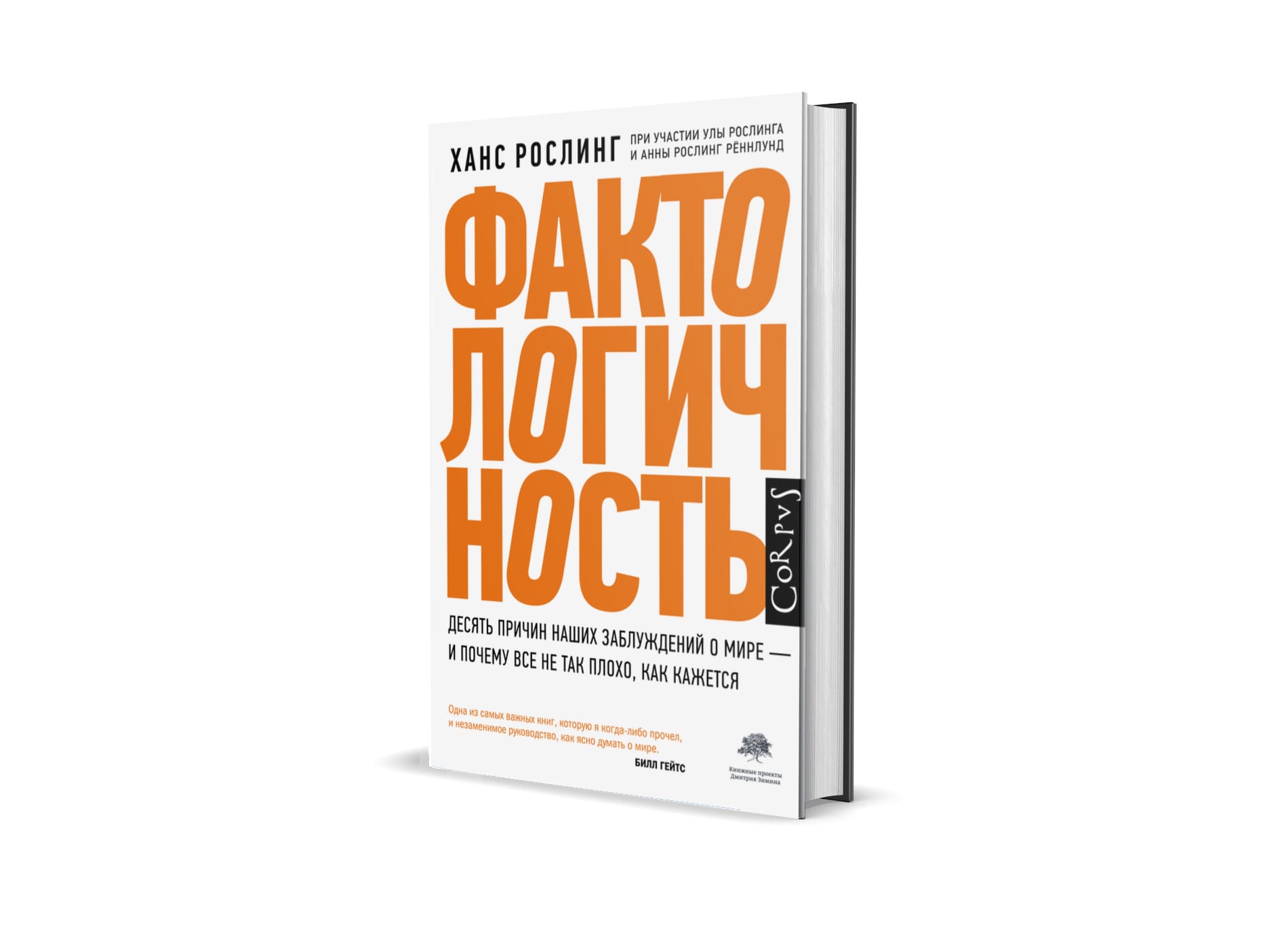Chances are, if you were asked a series of questions about the current state of the world, poverty, inequality and health issues, you would do worse than chimpanzees, who would mark random answers as correct. Hans Rosling clearly shows this. But this is by no means just unpleasant knowledge. Specialist in global health issues, founder of the Swedish branch of Doctors Without Borders, creator of the project Gapminder, Hans Rosling gives the reader a way out of the world of delusions. His book “Factuality,” published shortly before his death, is the result of many years of work and observations of how a person perceives the world around him.
Excerpt for reference
Why are more children surviving while fewer people are living?
If you add up the indicators of all parents from the second, third and fourth levels, whatever their religion (and even if they do not consider themselves to be of any religion at all), on average they will have two children. No joke! And this takes into account the populations of Iran, Mexico, India, Tunisia, Bangladesh, Brazil, Turkey, Indonesia and Sri Lanka, not to mention other countries.
The poorest 10 percent of families still have an average of five children. One in two families living in poverty loses an average of one child before the child reaches the age of five. This figure is shamefully high, but still represents a significant improvement over the dismal numbers that have held back population growth in the past.
When people hear that the population is growing, they intuitively assume that it will continue to grow unless action is taken. They represent how the trend continues into the future. But don't forget that you don't need to take any extraordinary measures to stop my grandson Mino from growing.
Melinda Gates and her husband Bill run a charitable foundation. They spend millions of dollars to save the lives of millions of children who live in poverty. To achieve this, they invest in primary healthcare and primary education. And yet, smart, well-intentioned people keep calling on the foundation to stop working. Their argument is: “If you continue to save poor children, you will kill the planet by overpopulation.”
I have also heard this argument after some of my talks. It was brought by people who sincerely want to preserve the planet for future generations. Intuitively it seems correct. If more children survive, the population simply grows. Right? No! Completely false.
Parents living in poverty have many children for the reasons I listed above: they need child labor, as well as insurance in case some of the children die. In countries with the highest child mortality rates, such as Somalia, Chad, Mali and Niger, women give birth to the most children, ranging from five to eight. Once children begin to survive, their labor is no longer needed, and women receive education, information about contraceptive methods and access to contraceptives, in all cultures and religions men and women begin to dream of fewer, better educated children.
The statement “saving poor children just increases the population” seems true, but the reality is different. The population is growing while the exit from poverty is delayed. Each subsequent generation living in poverty produces an even larger generation. The only sure way to curb population growth is to eradicate poverty and enable people to live better lives, including by giving them access to education and contraception. In this case, parents themselves decide to have fewer children. This transformation is happening all over the world, but it always requires reducing child mortality rates.
“Factuality” is a set of effective thinking tools that allow you to perceive the world in all its complexity and completeness, without falling into depression and news panic. Without simplifying or turning away from problems, but also without dramatizing reality, and understanding what exactly causes information stress and how to deal with it. Rosling details the pitfalls that our minds almost inevitably fall into, and explains how poverty, birth and death rates actually change.
Since the first edition, only one short fragment in the book has become statistically outdated, and it will remain relevant for many years to come. Including because it is not just dedicated to a person, but is called upon to practically help him live based on reliable knowledge.






